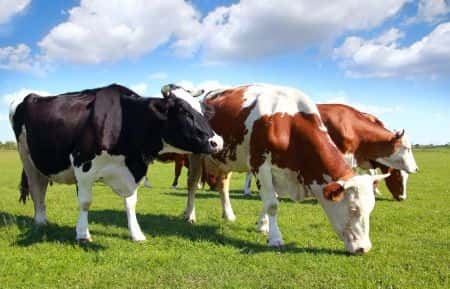Cattle ranch worker suffers severe brain injury
Updated on
This case involves a plaintiff who was working as a ranch hand at a cattle ranch, and also occasionally doubled as the farm’s beekeeping assistant. The ranch’s operation included the breeding of milk cows and rental of beehives; on average, the plaintiff worked with a herd of about 100 heifers and 20 bulls. After breeding the cattle, the ranch would sell them on the global market. To make it possible to raise such a large number of cattle on their land, the animals were fed grain instead of grass.
The plaintiff’s main job at the cattle ranch was to gather all of cattle on a regular basis. To accomplish this, the plaintiff was provided with a 4-wheeler, as well as an assistant; another farm hand who was suffering from the effects of an injury that made it difficult for him to effectively assist the plaintiff in doing his job.
According to the plaintiff, the bulls were wild and when they became grouped together rather tightly, they tended to become territorial and aggressive, to the point that they would sometimes fight over the cows. One day, as the plaintiff used the farm equipment to bring the cattle together in a group, one of the bulls charged him as he sat in his 4 wheeler, which left him with a severe brain injury. As a result of the injury, the plaintiff now has little ability to walk.
Question(s) For Expert Witness
1. What is the standard for the number of bulls and/or heifers per acre, or per fenced area?
2. How many farm hands are typically hired to do this type of work?
3. Is it standard to require workers to use 4 wheelers to do this type of work, considering the density of cattle?
Expert Witness Response E-006708
 While there are no specific standards regarding cattle density, special caution is required and should have been observed in instances such as this, because dairy bulls are universally known to be the most lethal domestic livestock animal on Earth. According to OSHA regulations, every employer has a legal obligation to provide a safe work environment for all of their employees. The task of gathering 120 cattle, including nearly 20 percent bulls, creates an inherently hazardous situation that should be attended to by at least 5 farm workers. In my experience, one farm hand can adequately handle 25 cattle, although the addition of bulls is always an added risk and requires additional eyes and hands for added safety.
While there are no specific standards regarding cattle density, special caution is required and should have been observed in instances such as this, because dairy bulls are universally known to be the most lethal domestic livestock animal on Earth. According to OSHA regulations, every employer has a legal obligation to provide a safe work environment for all of their employees. The task of gathering 120 cattle, including nearly 20 percent bulls, creates an inherently hazardous situation that should be attended to by at least 5 farm workers. In my experience, one farm hand can adequately handle 25 cattle, although the addition of bulls is always an added risk and requires additional eyes and hands for added safety.
This expert is an extremely well-qualified farming professional with nearly 40 years on various types of farms and ranches in nearly every type of position. He has direct experience working as a cattle manager for a very successful ranching operation, and he has also worked as a home lot foreman at a major feedlot. Currently, he owns and operates an extremely successful farming and ranching consulting firm, he has written several books on ranching and farming, and he teaches courses on ranching and farming throughout the country. Finally, this expert has extensive legal experience, including a case that was nearly identical to this one that was won in the plaintiff's favor.
About the author
Michael Morgenstern
Michael is Senior Vice President of Marketing at The Expert Institute. Michael oversees every aspect of The Expert Institute’s marketing strategy including SEO, PPC, marketing automation, email marketing, content development, analytics, and branding.
Subscribe to our newsletter
Join our newsletter to stay up to date on legal news, insights and product updates from Expert Institute.
Sign up nowFind an expert witness near you
What State is your case in?
Subscribe to our newsletter
Join our newsletter to stay up to date on legal news, insights and product updates from Expert Institute.



